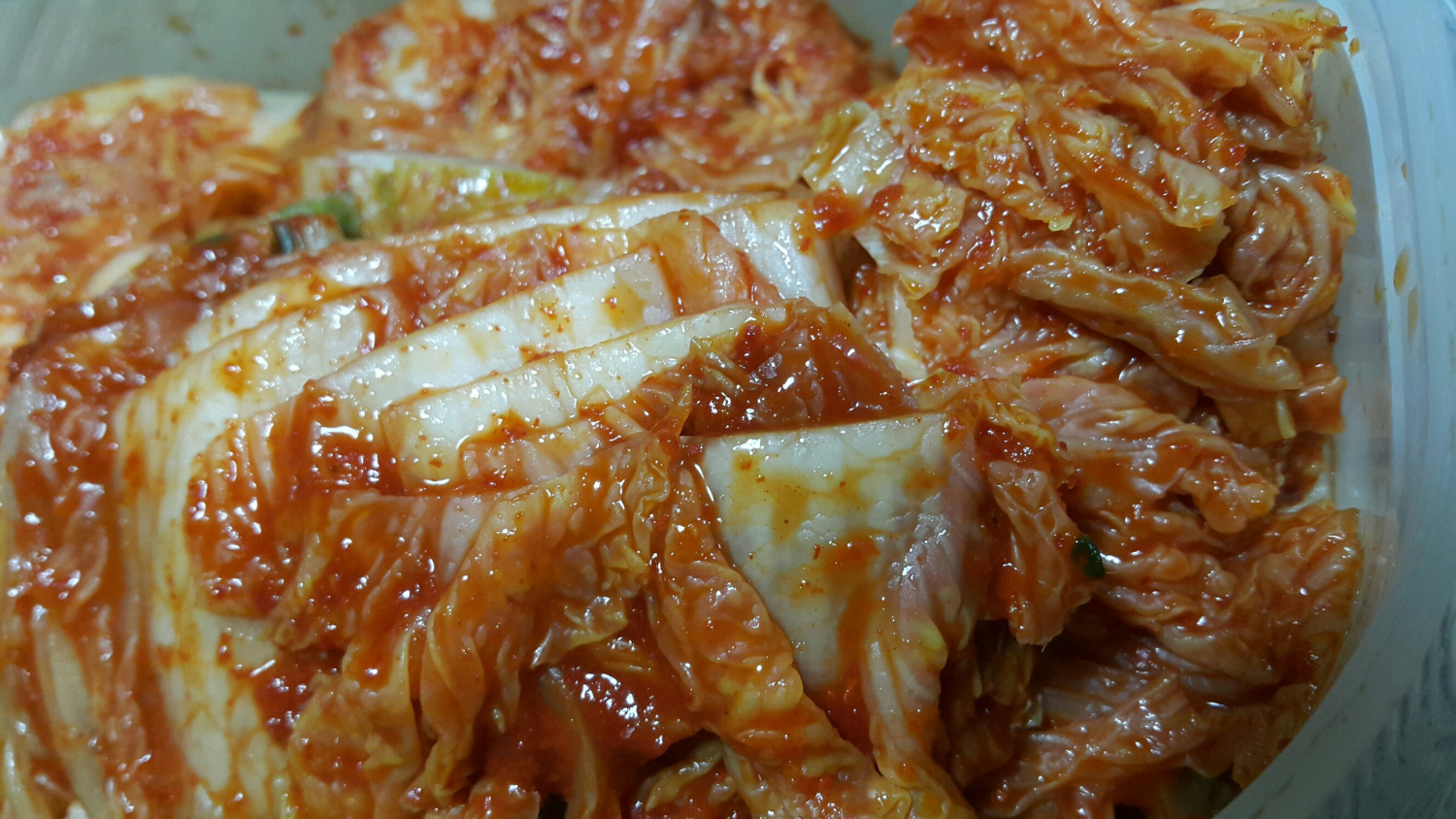Napa Cabbage Kimchi (Baechu Kimchi)
Homemade Fresh and Crispy Napa Cabbage Kimchi

While this recipe takes time for salting, making it yourself ensures hygiene and generous portions. Enjoy the crisp texture without any stickiness or overly sweet taste – just a refreshing, perfectly seasoned kimchi that’s ideal for any meal.
Main Ingredients- 2 heads of Napa cabbage (approx. 4kg)
- 3.5 cups coarse sea salt (approx. 700g)
Seasoning Ingredients- 2 cups Gochugaru (Korean chili flakes, approx. 200g)
- 5 Tbsp minced garlic
- 4 Tbsp all-purpose flour
- 1 cup fish sauce (anchovy or sand lance, approx. 200ml)
- 1.5 Tbsp plum extract
- 2 cups Gochugaru (Korean chili flakes, approx. 200g)
- 5 Tbsp minced garlic
- 4 Tbsp all-purpose flour
- 1 cup fish sauce (anchovy or sand lance, approx. 200ml)
- 1.5 Tbsp plum extract
Cooking Instructions
Step 1
First, prepare the brining water by dissolving the coarse sea salt in water. Add the salt to about 1 liter of water and stir until completely dissolved.

Step 2
Prepare the cabbage. Trim the base of the cabbage and cut each head vertically in half. To minimize leaf breakage, hold the halved cabbage with the cut side facing up, make a cut about halfway down from the core, and then gently pull it apart with your hands. Cut each half again vertically, this time cutting only halfway down from the core and pulling apart. When cutting larger outer leaves, make the cut slightly longer; this helps prevent the smaller inner leaves from breaking as easily.

Step 3
Carefully lift each cabbage leaf and generously sprinkle coarse sea salt between the leaves. Be sure to salt the thicker core areas well, as they need more time to soften.

Step 4
Brine the cabbage with the saltwater. Pour the prepared saltwater evenly over the entire cabbage, ensuring all parts are moistened. Then, place the cabbage cut-side down to brine. This method helps the saltwater permeate all sections of the cabbage.

Step 5
Cover the cabbage and let it brine for approximately 12 hours. Check periodically. Ensure the thick stems are submerged in the brining liquid, and overlap the leaves onto the stems. The cabbage is sufficiently brined when the stems are flexible and bend easily without snapping.

Step 6
While the cabbage is brining, make the flour paste. In a saucepan, combine 4 tablespoons of flour with about 1 cup of cold water, stirring until smooth and lump-free. Heat over low heat, stirring constantly until it begins to thicken and boil gently. Once it boils, remove from heat and let it cool completely. The flour paste acts as a binder, helping the seasoning adhere better to the cabbage.

Step 7
Once the cabbage stems are tender and flexible, rinse them thoroughly under cold running water. Wash at least 5 times to remove any grit or residual saltiness, ensuring no impurities remain. After rinsing, place the cabbage on a colander or sieve to drain completely. Thoroughly draining the cabbage is crucial to prevent the kimchi from becoming watery and bland.

Step 8
Prepare the kimchi seasoning. In a large bowl, combine the gochugaru, minced garlic, fish sauce, plum extract, and the completely cooled flour paste. Mix everything thoroughly until well combined. Ensure there are no lumps in the seasoning mixture, as this will make it difficult to spread evenly on the cabbage.

Step 9
Now it’s time to season the cabbage. Put on disposable gloves and carefully spread the prepared seasoning mixture between each leaf of the brined cabbage. Ensure the seasoning is applied evenly down to the core of each leaf.

Step 10
Massage the seasoning into the cabbage. Use your fingers to spread the seasoning evenly throughout each leaf and along the stems. If the seasoning mixture feels too thick, you can add a little bit of the drained cabbage water to achieve a smoother, more spreadable consistency. The kimchi can be enjoyed immediately, but for a deeper flavor, allow it to ferment in the refrigerator for at least a day.



